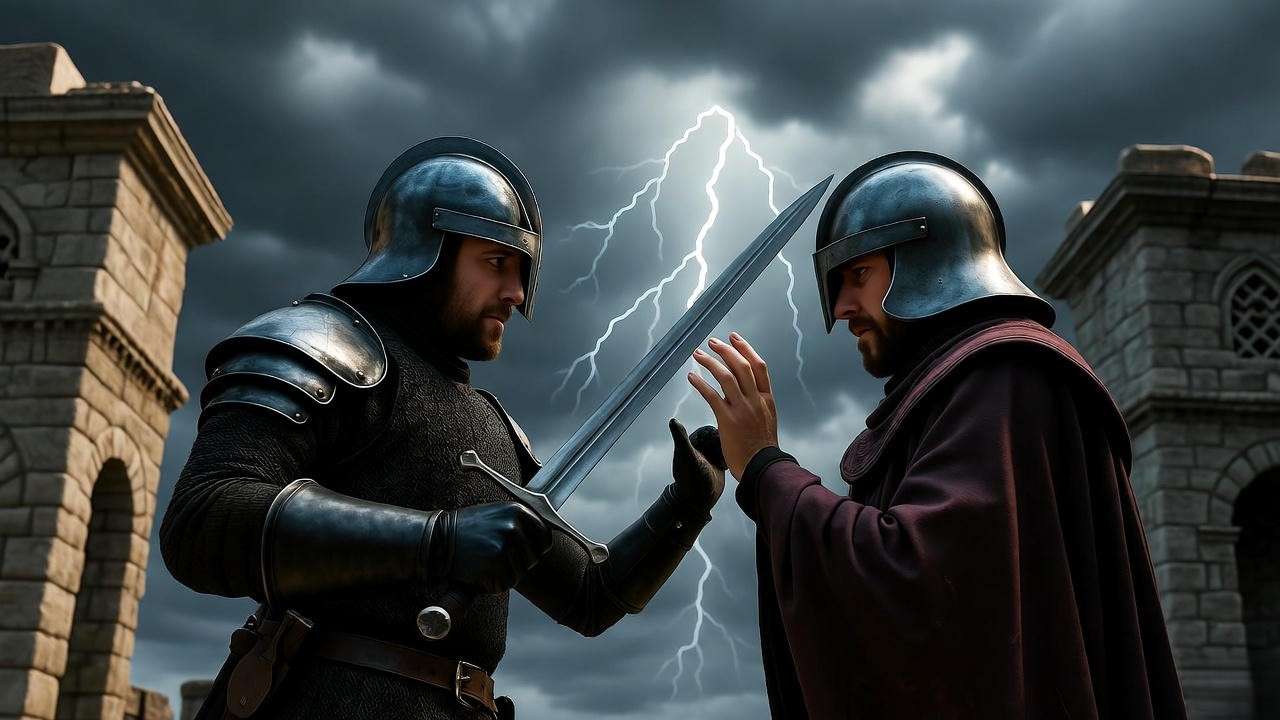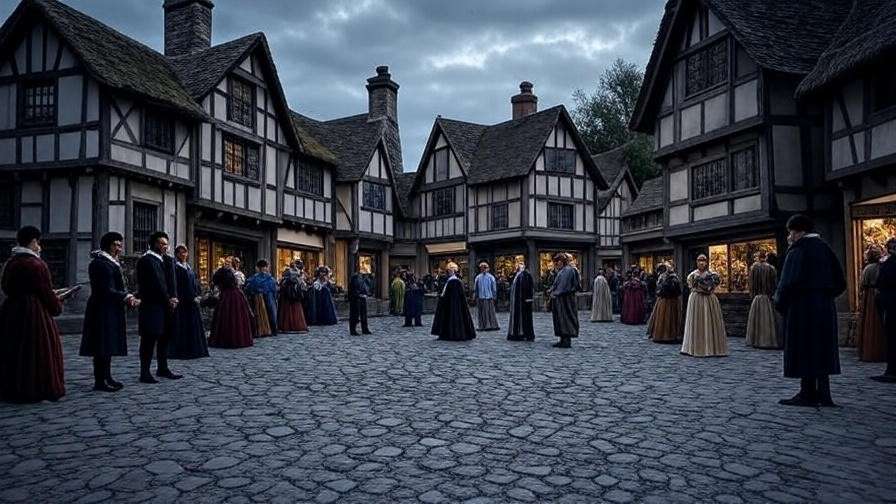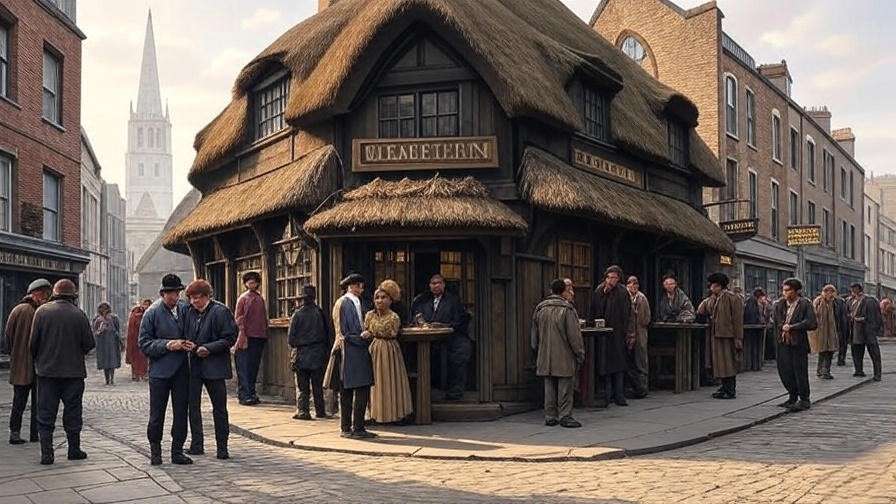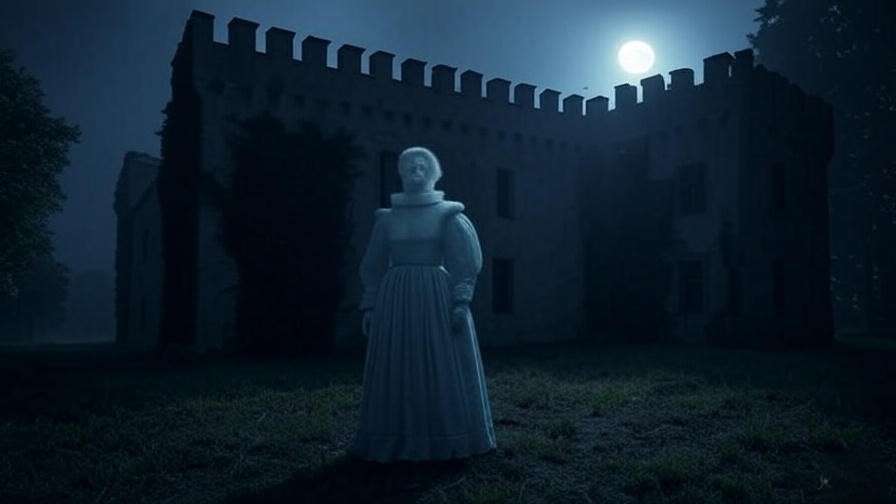Picture yourself hunched over Hamlet, Shakespeare’s labyrinthine tragedy, as the clock ticks toward a looming essay deadline. The words blur, the themes tangle, and the question looms: what does it all mean? For students, educators, and Shakespeare enthusiasts searching for SparkNotes for Hamlet, this guide is your beacon through the fog of Elizabethan prose. Hamlet is a masterpiece of betrayal, revenge, and existential questioning, but its depth can feel overwhelming. Fear not—this comprehensive guide distills the play’s essence, offering clear summaries, character insights, and study strategies. Backed by years of studying Shakespeare’s works in academic and theatrical contexts, this article is your ultimate resource to conquer Hamlet with confidence.
Why Hamlet Matters: A Timeless Shakespearean Masterpiece
Historical and Cultural Significance
Hamlet, written around 1600, stands as a pinnacle of Renaissance literature. Its exploration of human nature—grief, vengeance, and morality—resonates across centuries. The play premiered at the Globe Theatre, captivating audiences with its psychological depth. Today, it influences everything from blockbuster films like The Lion King to avant-garde theater productions. Kenneth Branagh’s 1996 film adaptation, for instance, brought Hamlet’s grandeur to modern screens, proving its timeless appeal. According to Dr. Emma Smith, a Shakespeare scholar at Oxford University, “Hamlet’s universal themes make it a mirror for every era’s anxieties.”
Why Readers Struggle with Hamlet
For many, Hamlet feels like a puzzle. Its Elizabethan language, dense with metaphors and iambic pentameter, can obscure meaning. The play’s philosophical questions—about life, death, and morality—demand careful thought. Hamlet’s internal conflict, oscillating between action and inaction, confuses readers expecting a straightforward revenge tale. A SparkNotes-style guide bridges this gap, simplifying without sacrificing depth. By breaking down the plot, characters, and themes, this article ensures you grasp Hamlet’s brilliance without drowning in its complexity.
Plot Summary: A Clear Breakdown of Hamlet
Act-by-Act Overview
Hamlet unfolds in five acts, set in Denmark’s Elsinore Castle. Here’s a concise summary:
- Act 1: Prince Hamlet learns from his father’s ghost that King Claudius, Hamlet’s uncle, murdered him to seize the throne. Hamlet vows revenge but feigns madness to investigate.
- Act 2: Hamlet’s erratic behavior alarms the court. Polonius, the king’s advisor, suspects Hamlet’s love for Ophelia drives his madness. Hamlet stages a play to test Claudius’s guilt.
- Act 3: The play confirms Claudius’s crime. Hamlet confronts his mother, Gertrude, and accidentally kills Polonius, mistaking him for Claudius.
- Act 4: Claudius exiles Hamlet to England, plotting his death. Ophelia, devastated by her father’s death, descends into madness and drowns. Laertes, her brother, seeks vengeance.
- Act 5: Hamlet returns, facing a deadly duel orchestrated by Claudius. Poison and betrayal lead to a tragic climax, leaving nearly all main characters dead.
This overview sets the stage for deeper analysis, ensuring you follow the narrative’s twists.
Key Turning Points
Several moments define Hamlet’s trajectory:
- The Ghost’s Revelation (Act 1): The ghost’s accusation ignites Hamlet’s quest, setting the revenge plot in motion.
- “To Be or Not to Be” Soliloquy (Act 3): Hamlet’s meditation on life and death reveals his existential crisis, a cornerstone of the play’s philosophy.
- The Play-Within-a-Play (Act 3): Hamlet’s staged performance catches Claudius’s guilt, confirming the ghost’s truth.
- Ophelia’s Death (Act 4): Her tragic drowning underscores the collateral damage of Hamlet’s mission.
- The Final Duel (Act 5): A poisoned sword and cup lead to a catastrophic showdown, tying up the play’s themes of retribution and mortality.
Visual Idea: A timeline infographic mapping these events could help visual learners track the plot’s progression.
Key Characters in Hamlet: Who’s Who
Hamlet – The Tragic Prince
Hamlet, Denmark’s prince, is a complex figure torn between duty and doubt. His father’s murder fuels his quest for revenge, but his philosophical nature delays action. His feigned madness—coupled with soliloquies like “O, what a rogue and peasant slave am I”—reveals a mind wrestling with morality and mortality. Literary critic Harold Bloom calls Hamlet “a character who thinks too much, yet not enough,” capturing his tragic flaw: indecision.
Supporting Characters
- Claudius: The usurping king, whose ambition and guilt drive the plot. His scheming contrasts with Hamlet’s introspection.
- Gertrude: Hamlet’s mother, whose hasty remarriage to Claudius sparks his resentment. Her motives remain ambiguous—is she complicit or naive?
- Ophelia: Polonius’s daughter, caught between her love for Hamlet and her family’s expectations. Her descent into madness is heartbreaking.
- Polonius: The verbose advisor, whose meddling leads to his demise.
- Laertes: Ophelia’s brother, whose impulsive quest for revenge mirrors and contrasts Hamlet’s.
- The Ghost: King Hamlet’s spirit, whose demand for justice sets the tragedy in motion.
Minor Characters with Major Impact
- Rosencrantz and Guildenstern: Hamlet’s old friends, manipulated by Claudius, symbolize betrayal.
- Fortinbras: The Norwegian prince, whose decisive action contrasts with Hamlet’s hesitation, highlighting themes of leadership and resolve.
Expert Insight: Scholar Stephen Greenblatt notes that Hamlet’s complexity lies in his “self-conscious theatricality,” making him both actor and observer in his own tragedy.
Major Themes and Symbols in Hamlet
Core Themes
Hamlet explores profound ideas:
- Revenge: The central drive, complicated by Hamlet’s moral qualms. His hesitation questions whether vengeance justifies its cost.
- Mortality: Death permeates the play, from the ghost to the graveyard scene, prompting reflections on life’s meaning.
- Madness: Real or feigned, madness (Hamlet’s and Ophelia’s) explores the fragility of the human mind.
- Moral Corruption: Claudius’s usurpation and Denmark’s “rotten” state reflect ethical decay.
Example: The graveyard scene, where Hamlet muses over Yorick’s skull, ties mortality to the inevitability of death, regardless of status.
Key Symbols
- Yorick’s Skull: A memento mori, reminding Hamlet of life’s transience.
- The Ghost: Represents unresolved justice and the past’s hold on the present.
- The Poisoned Sword and Cup: Symbolize betrayal and the destructive ripple effects of sin.
Table Idea: A table summarizing themes, their key scenes, and textual evidence could aid quick comprehension.
Understanding Shakespeare’s Language in Hamlet
Decoding Elizabethan English
Shakespeare’s language in Hamlet can feel like a foreign tongue, with words like “thou,” “hath,” and “wherefore” tripping up modern readers. To unlock the text, focus on context and rhythm. For instance, “thou” is an informal “you,” used for intimacy or insult, while “hath” means “has.” Reading aloud helps capture the iambic pentameter’s flow, making meaning clearer. Tools like the Folger Shakespeare Library’s online glossary can demystify archaic terms. For example, in Hamlet’s line, “O, that this too too solid flesh would melt,” “solid” may imply “sullied,” reflecting his self-loathing.
The Power of Soliloquies
Hamlet’s soliloquies are windows into its characters’ souls, especially Hamlet’s. The most famous, “To be or not to be” (Act 3, Scene 1), grapples with existence itself: is life worth enduring? Hamlet weighs the pain of living against the fear of death’s “undiscovered country.” Another key soliloquy, “O, what a rogue and peasant slave am I” (Act 2, Scene 2), reveals his self-doubt and frustration at his inaction compared to an actor’s passion. These speeches drive the play’s psychological depth, making them essential for analysis.
Example: Here’s a side-by-side of “To be or not to be”:
- Original: “To be, or not to be, that is the question: / Whether ’tis nobler in the mind to suffer / The slings and arrows of outrageous fortune…”
- Modern: “To live or die, that’s the question: / Is it better to endure life’s hardships / Or face the unknown risks of death…”
This comparison clarifies meaning while preserving Shakespeare’s poetry.
Study Tips: Using This Guide Like SparkNotes
How to Study Hamlet Effectively
To master Hamlet, adopt active reading strategies:
- Annotate Key Passages: Highlight soliloquies, recurring motifs (e.g., decay, spying), and pivotal dialogue. Note Hamlet’s shifting moods.
- Summarize Scenes: After each scene, jot down its main events and how they advance the plot or themes.
- Connect to Context: Research Denmark’s political climate or Elizabethan views on ghosts to deepen your understanding.
- Discuss with Peers: Join study groups to debate questions like “Is Hamlet’s madness genuine?” to spark insights.
Tip: Create a study checklist: read one act per day, summarize themes, and review one soliloquy weekly. A downloadable checklist could streamline this process for students.
Essay Writing and Analysis
Writing about Hamlet requires focus and evidence. Here are sample essay prompts with tips:
- Prompt: “Is Hamlet truly mad, or is his madness a strategic act?”
- Approach: Argue with examples from his interactions (e.g., calculated wit with Polonius vs. erratic behavior with Ophelia). Cite soliloquies to show his lucidity.
- Prompt: “How does Claudius embody corruption in Hamlet?”
- Approach: Analyze his actions (murder, manipulation) and imagery (e.g., “something is rotten in the state of Denmark”). Contrast with Hamlet’s moral struggle.
Step-by-Step Essay Guide:
- Choose a Thesis: E.g., “Hamlet’s indecision reflects his moral integrity.”
- Gather Evidence: Quote the text (e.g., Act 3 soliloquies) and reference scholarly interpretations.
- Structure: Use an intro, three body paragraphs (each with a theme or character point), and a conclusion.
- Cite Sources: Reference texts like the Arden Shakespeare edition for credibility.
Hamlet in Modern Context: Why It Resonates Today
Adaptations and Pop Culture
Hamlet’s influence permeates modern culture. Disney’s The Lion King mirrors its themes of regicide and vengeance, with Simba as a Hamlet-like figure. Tom Stoppard’s Rosencrantz and Guildenstern Are Dead reimagines minor characters, highlighting existential absurdity. Recent stage productions, like the 2023 RSC Hamlet with a diverse cast, reframe the play for new audiences. These adaptations show Hamlet’s flexibility, making it a cultural touchstone.
Lessons for Today’s Readers
Hamlet speaks to modern issues:
- Mental Health: Hamlet’s introspective despair resonates with discussions of anxiety and depression. His soliloquies echo the inner turmoil many face.
- Family Dynamics: The strained relationships (Hamlet and Gertrude, Ophelia and Polonius) reflect universal family tensions.
- Ethical Dilemmas: Hamlet’s moral hesitation mirrors debates over justice in today’s polarized world.
Expert Insight: Director Gregory Doran notes, “Hamlet’s questions about identity and purpose feel urgent in our fragmented age,” explaining its appeal in modern theater.
Common Misconceptions About Hamlet
Debunking Myths
- Myth: “Hamlet is just a whiny prince.”
- Truth: Hamlet’s indecision stems from profound ethical concerns, not weakness. His soliloquies reveal a mind grappling with cosmic questions.
- Myth: “The play is only about revenge.”
- Truth: While revenge drives the plot, Hamlet explores broader themes like mortality, madness, and corruption, as seen in the graveyard scene.
Controversial Interpretations
- Hamlet’s Madness: Some argue it’s entirely feigned; others see genuine psychological strain. Evidence like his lucid planning (the play-within-a-play) suggests control, but his erratic behavior with Ophelia hints at instability.
- Gertrude’s Complicity: Is she aware of Claudius’s crime? Her ambiguous dialogue leaves room for debate, with scholars like Janet Adelman arguing she’s a victim of circumstance.
Tip: Encourage readers to form their own interpretations by revisiting key scenes, fostering critical thinking.
FAQs About Hamlet
What is the main point of Hamlet?
Hamlet explores revenge, mortality, and the human condition. It questions whether justice can be achieved without moral compromise, using Hamlet’s journey to probe life’s deepest uncertainties.
How can I understand Hamlet’s soliloquies?
Break them into parts: identify the speaker’s mood, key images (e.g., “slings and arrows”), and philosophical questions. Read aloud to feel the rhythm, and use modern translations for clarity.
Why is Hamlet considered Shakespeare’s greatest work?
Its psychological depth, universal themes, and linguistic brilliance set it apart. Critics like A.C. Bradley praise its exploration of human complexity, making it a staple in literary studies.
How can I use this guide for my studies?
Use the plot summary to follow the story, character breakdowns for essays, and study tips for exam prep. Bookmark sections for quick reference during assignments.
This guide, your SparkNotes-style companion to Hamlet, unlocks Shakespeare’s tragedy with clear summaries, deep character insights, and practical study strategies. Whether you’re a student tackling an essay, an educator teaching the play, or a fan seeking deeper appreciation, this resource empowers you to navigate Hamlet’s complexities. Bookmark this page, share it with peers, and explore more Shakespeare insights at williamshakespeareinsights.com. What’s your favorite Hamlet quote? Drop it in the comments to spark discussion!













